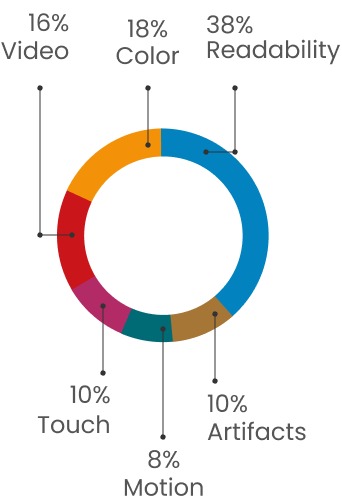Readability 38%
We evaluate how easily and comfortably users can read their display under different situations and lighting conditions (from total darkness to bright sunlight)
In readability, DXOMARK particularly tests (among others)
-
- Readability vs. ambient lighting: brightness and contrast are measured to verify that the device can be easily read in different lighting environments, from very dark to super bright light conditions
-
- Readability vs. light transitions evaluates the display behavior in a changing lighting environment (e.g. going out of the metro and moving to a very sunny street)
- Readability vs viewing angle evaluates the behavior of the device when multiple people are looking at a display, when the device is viewed off-axis



